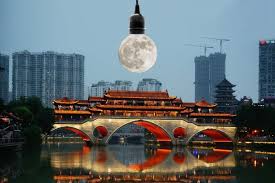
Breaking News
 LIVE ELECTION RESULTS: New York mayor, NJ & VA governor, Prop 50, Trump endorsements, latest vote
LIVE ELECTION RESULTS: New York mayor, NJ & VA governor, Prop 50, Trump endorsements, latest vote
 Sen. Markwayne Mullin Reveals Schumer Held Secret BACKROOM MEETING...
Sen. Markwayne Mullin Reveals Schumer Held Secret BACKROOM MEETING...
 RIP NYC - Muslim Communist Zohran Mamdani Wins New York City Mayoral Race
RIP NYC - Muslim Communist Zohran Mamdani Wins New York City Mayoral Race
 Dramatic Footage Shows UPS Cargo Jet Crashing At Louisville Airport
Dramatic Footage Shows UPS Cargo Jet Crashing At Louisville Airport
Top Tech News
 Japan just injected artificial blood into a human. No blood type needed. No refrigeration.
Japan just injected artificial blood into a human. No blood type needed. No refrigeration.
 The 6 Best LLM Tools To Run Models Locally
The 6 Best LLM Tools To Run Models Locally
 Testing My First Sodium-Ion Solar Battery
Testing My First Sodium-Ion Solar Battery
 A man once paralyzed from the waist down now stands on his own, not with machines or wires,...
A man once paralyzed from the waist down now stands on his own, not with machines or wires,...
 Review: Thumb-sized thermal camera turns your phone into a smart tool
Review: Thumb-sized thermal camera turns your phone into a smart tool
 Army To Bring Nuclear Microreactors To Its Bases By 2028
Army To Bring Nuclear Microreactors To Its Bases By 2028
 Nissan Says It's On Track For Solid-State Batteries That Double EV Range By 2028
Nissan Says It's On Track For Solid-State Batteries That Double EV Range By 2028
 Carbon based computers that run on iron
Carbon based computers that run on iron
 Russia flies strategic cruise missile propelled by a nuclear engine
Russia flies strategic cruise missile propelled by a nuclear engine
 100% Free AC & Heat from SOLAR! Airspool Mini Split AC from Santan Solar | Unboxing & Install
100% Free AC & Heat from SOLAR! Airspool Mini Split AC from Santan Solar | Unboxing & Install
Fusion breakthrough as China's "artificial sun" reaches 100 million degrees

During a four-month experiment, the "Chinese artificial sun" reached a core plasma temperature of over 100 million degrees Celsius – that's more than six times hotter than the interior of the Sun – and a heating power of 10 MW, enabling the study of various aspects of practical nuclear fusion in the process.
Beginning operations in 2006, the Chinese designed and developed EAST is located at the Hefei Institutes of Physical Science of the Chinese Academy of Sciences (CASHIPS) and is billed as an open test facility for conducting steady-state operations and ITER-related physics research by both Chinese and international scientists. And, like many other fusion experiments, the ultimate goal is to produce a practical nuclear fusion power reactor.
EAST is a tokamak reactor, which consists of a metal torus or doughnut that is exhausted to a hard vacuum and then injected with hydrogen atoms. These atoms are then heated by a number of different methods to create a plasma that is then compressed using a series of powerful superconducting magnets.



